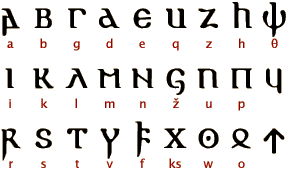Tibetan
Tibetan inscriptions date back to the 7th and 8th century. The origin of the Tibetan script is somewhat unknown. There are a few places that are thought to be the origin of it, but no-one knows which yet. However the script's structure shows us that it's ancestor is the Brahmi script of India.
Lawrence Lo. (No Date)
Tibetan. Ancient Scripts [Online]
Available at http://www.ancientscripts.com/tibetan.html
Accessed on 15th June 2014, 22:21pm











